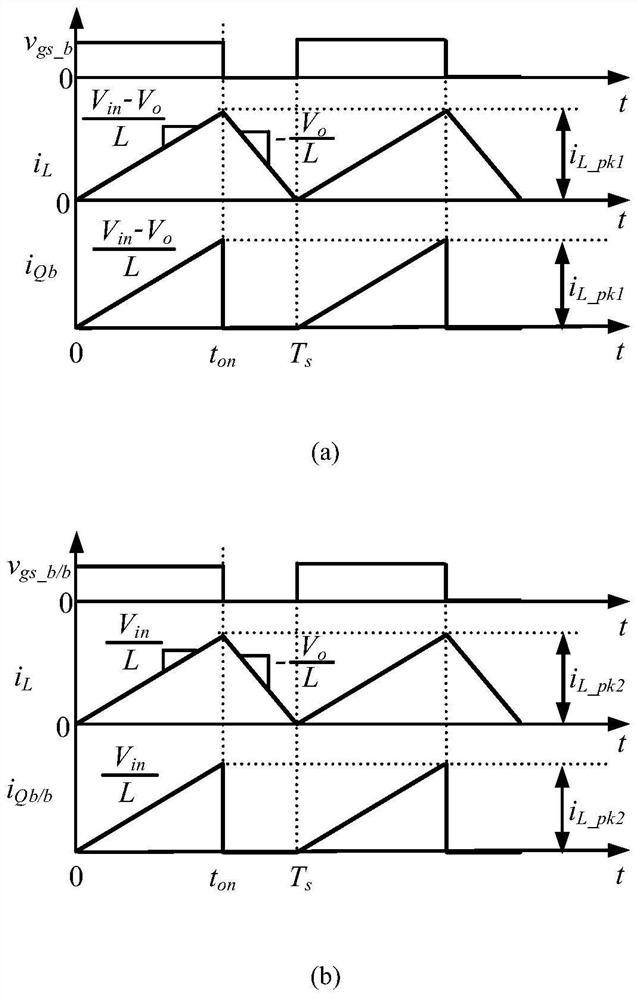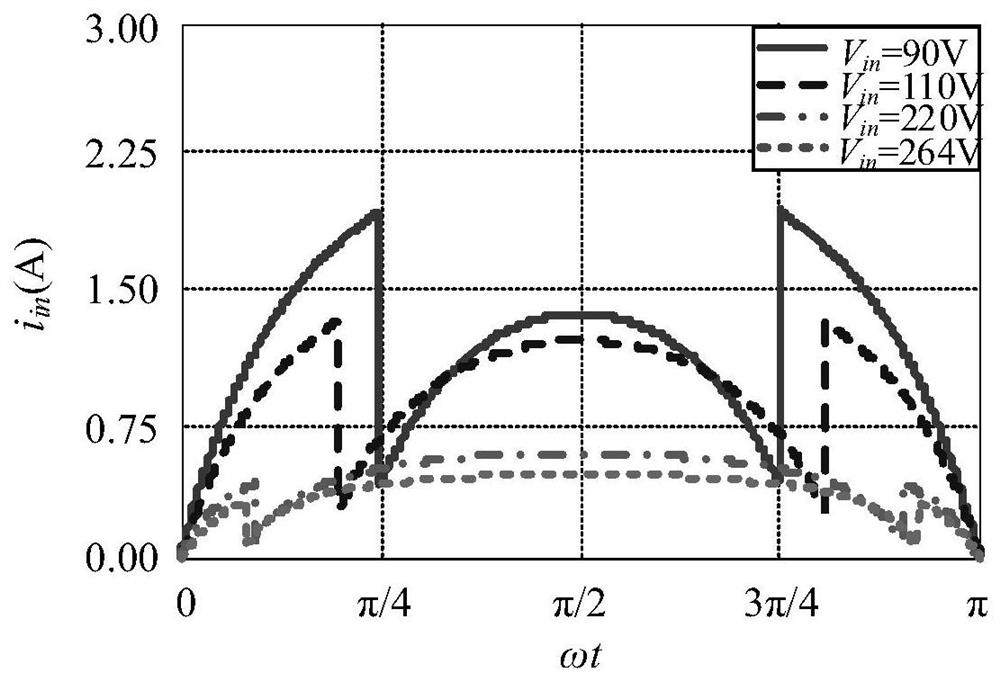CRM buck-boost converter controlled by segmented constant conduction time
A buck-boost converter and time control technology, which is applied in the control/regulation system, output power conversion device, DC power input conversion to DC power output, etc., can solve the problem of poor EMI differential mode characteristics and large conduction loss of switching tubes , Inductive current peak value and other problems, to achieve the effect of small conduction loss, reduce inductor current ripple, and reduce current effective value
- Summary
- Abstract
- Description
- Claims
- Application Information
AI Technical Summary
Problems solved by technology
Method used
Image
Examples
Embodiment Construction
[0034] The present invention will be described in further detail below in conjunction with the accompanying drawings and specific embodiments.
[0035] 1CRM Buck-Buck / Boost PFC converter working principle
[0036] figure 1 It is the main circuit of CRM Buck-Buck / Boost PFC converter.
[0037] Settings: 1. All devices are ideal; 2. The output voltage ripple is small compared to its DC value; 3. The switching frequency is much higher than the input voltage frequency.
[0038] figure 2 The switching tube current and inductor current waveforms in one switching cycle of the CRM Buck-Buck / Boost PFC converter are given, where Figure (a) is the waveform of the Buck converter when it is working, and Figure (b) is the Buck / Boost converter Waveform diagram at work. When the input voltage v g less than the output voltage V o , the second switching tube Q b / b When turned on, D fw At the end, the voltage across the inductor L is v g , its current i L start with zero and start with...
PUM
 Login to View More
Login to View More Abstract
Description
Claims
Application Information
 Login to View More
Login to View More - R&D
- Intellectual Property
- Life Sciences
- Materials
- Tech Scout
- Unparalleled Data Quality
- Higher Quality Content
- 60% Fewer Hallucinations
Browse by: Latest US Patents, China's latest patents, Technical Efficacy Thesaurus, Application Domain, Technology Topic, Popular Technical Reports.
© 2025 PatSnap. All rights reserved.Legal|Privacy policy|Modern Slavery Act Transparency Statement|Sitemap|About US| Contact US: help@patsnap.com



